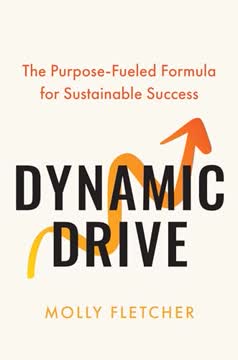Key Takeaways
1. Dynamic Drive: A Lifestyle of Intentional Improvement
Dynamic Drive is the spark that ignites and fuels the joyful pursuit of a better life.
Beyond Traditional Drive. Dynamic Drive transcends the conventional definition of drive as merely the energy to achieve specific goals. It's a holistic approach to life, a mindset that embraces continuous growth and fulfillment, not just the attainment of objectives. It's about the journey, not just the destination.
Purpose-Driven Evolution. Unlike finite goals, Dynamic Drive is fueled by a deep sense of purpose, constantly evolving and adapting to life's changes. It's a commitment to aligning your actions with your values, creating a sustainable path toward personal and professional betterment. This approach recognizes that we are always a work in progress.
Fulfillment over Achievement. Dynamic Drive prioritizes fulfillment over mere achievement, emphasizing the importance of meaning and enjoyment in your efforts. It's about becoming the best version of yourself, not just accumulating more trophies or promotions. It's about who you become as a result of the journey and the lives you change along the way.
2. Complacency: The Silent Dream Killer
Complacency is a feeling of self-satisfaction that keeps you from reaching your potential.
The Enemy of Progress. Complacency is a pervasive and damaging roadblock to a fulfilled and abundant life. It's a state of self-satisfaction that prevents you from pushing yourself, taking risks, and striving for more. It lulls you into a false sense of security, hindering your growth and potential.
The Stages of Complacency. Complacency progresses through distinct stages: Drift (acceptance of the status quo), Decline (noticeable deterioration in various life areas), and Despair (loss of hope and motivation). Recognizing these stages is crucial for taking action and reversing the negative effects.
Combating Complacency. Overcoming complacency requires awareness, intentionality, and a willingness to step outside your comfort zone. It involves actively seeking challenges, embracing discomfort, and committing to continuous self-improvement. Dynamic Drive is the antidote to complacency.
3. Mindset: The Foundation of Achievement
Our beliefs have immense power. They dictate where success begins and ends.
Limitless vs. Limited. A limitless mindset embraces possibility, while a limited mindset is characterized by doubt and restriction. Cultivating a limitless mindset is essential for unlocking your potential and achieving your goals. It's the willingness to step into the next thing with the conviction that good will come as a result of taking action.
Reframing Obstacles. A key aspect of a limitless mindset is the ability to reframe obstacles as opportunities. Instead of dwelling on what can't be done, focus on what can be done and how challenges can be overcome. This shift in perspective can transform setbacks into stepping stones.
Total Mindset Reset (TMR). The TMR technique involves recognizing negative self-talk, replacing it with positive affirmations, and reinforcing the new mindset through consistent action. This process helps to rewrite your mental script and strengthen your belief in your abilities. It's a conscious choice to change your self-talk and change your mindset.
4. Energy: Fueling Your Purposeful Journey
Energy is the fuel that allows you to engage fully in life’s demands.
From Time to Energy. Shift your focus from managing time to managing energy. Recognize that energy is a limited resource and prioritize its allocation to activities that align with your values and goals. This intentional approach can lead to increased effectiveness and fulfillment.
The Energy Audit. Conduct an Energy Audit to identify your Energizers (activities that renew your energy), Drainers (activities that deplete your energy), and Neutrals (activities that have little impact on your energy). This awareness allows you to maximize your Energizers and minimize your Drainers.
Protecting Your Energy. Take control of your energy by setting boundaries, saying no to unnecessary commitments, and prioritizing rest and recovery. This proactive approach ensures that you have the energy needed to pursue your goals and engage in meaningful activities. It's about the holistic view of your life and legacy.
5. Discipline: The Bridge to Your Goals
Discipline is the process that takes you from where you are to where you want to be.
Beyond Motivation. Discipline is the key to consistent action, even when motivation wanes. It's the ability to do what needs to be done, regardless of how you feel. Discipline is your secret weapon to reaching your goals.
The Discipline Bridge. The Discipline Bridge is a framework for building the habits and behaviors needed to achieve your goals. It involves identifying a desired future, scrutinizing the gap between your current state and your goal, and putting in the consistent work needed to bridge that gap.
The Freedom of Discipline. Discipline isn't about restriction; it's about freedom. It's freedom from regret, from disappointment, and from wondering what you're capable of. It's about aligning your actions with your values and living a life of purpose.
6. Curiosity: Unlocking New Possibilities
Curiosity is the spark that ignites possibility.
The Power of Inquiry. Curiosity is a driving force behind new discoveries and innovations. It's the desire to learn, explore, and question the status quo. Cultivating curiosity can lead to new opportunities and a deeper understanding of the world.
Building Curiosity. There are several ways to build curiosity, including asking open-ended questions, setting learning goals, surrounding yourself with curious people, and listening to learn. These practices can help you develop a more inquisitive and open-minded approach to life.
The Curiosity Edge. The Curiosity Edge is the desire to seek opportunities to learn, regardless of the discomfort it might create. It's a vaccine against complacency and a key ingredient for sustained growth and innovation. It shows up in every aspect of life: your work, your relationships, your self-development, and how you view the world and your role in it.
7. Resilience: Bouncing Back Stronger
The best recover from adversity fast. They’re disciplined and intentional about their recovery.
Beyond Recovery. Resilience is not just about bouncing back; it's about bouncing back stronger. It's about learning from setbacks, adapting to change, and emerging with greater wisdom and strength. It is a constant process where you build it over time.
The Next Play Mentality. The next play mentality involves focusing on what's next, rather than dwelling on past mistakes. It's about letting go of what you can't control and focusing on what you can. It requires emotional regulation.
Expected to Be Tested. Prepare for adversity by visualizing yourself overcoming obstacles and developing a plan for how you'll respond to challenges. This proactive approach can help you build resilience and maintain a positive mindset in the face of setbacks.
8. Connection: The Power of Human Relationships
Connection is the link to a meaningful life.
Beyond Communication. Connection is more than just communication; it's about building genuine relationships based on trust, empathy, and shared values. It's about understanding and supporting others, and creating a sense of belonging.
Building Trust. Trust is a key ingredient for strong connections. It's built through consistent actions, honesty, and a genuine desire to help others. Anticipating others' needs and offering support without being asked are powerful ways to build trust.
Boundaries and Tough Conversations. Healthy relationships require boundaries and the willingness to have tough conversations. Setting boundaries communicates your expectations and protects your energy, while tough conversations foster honesty and transparency.
9. Confidence: Believing in Your Potential
Confidence is your secret weapon that makes you unstoppable.
Beyond Validation. Confidence is not about seeking validation from others; it's about believing in yourself and your abilities, regardless of external opinions. It's about having faith in your judgment and being secure in who you are.
Confidence Through Action. Confidence comes through action, not just through positive thinking. Taking action, even in the face of uncertainty or fear, can lead to a sense of accomplishment and growth, which in turn boosts confidence.
The Confidence Zones. Step outside of your comfort zone and into your stretch zone to build confidence. The stretch zone is that ideal place where you get stretched but don’t break. It is within the Stretch Zone that our confidence grows as we experience success in new areas of life.
Last updated:
FAQ
1. What is Dynamic Drive: The Purpose-Fueled Formula for Sustainable Success by Molly Fletcher about?
- Purpose-driven success formula: The book introduces a framework for achieving sustainable success by aligning your goals with your deeper purpose and values, emphasizing ongoing growth over one-time achievements.
- Seven Keys methodology: Fletcher presents seven actionable keys—Mindset, Energy, Discipline, Curiosity, Resilience, Connection, and Confidence—to unlock and sustain high performance.
- Overcoming complacency: The narrative centers on identifying and defeating complacency, which Fletcher describes as the main obstacle to fulfillment and progress.
- Real-life examples: Drawing from her experience with elite athletes and business leaders, Fletcher illustrates her concepts with practical stories and case studies.
2. Why should I read Dynamic Drive by Molly Fletcher?
- Insights from elite performers: Fletcher shares lessons learned from representing top athletes, coaches, and business leaders, offering proven strategies for sustained high performance.
- Combatting burnout and stagnation: The book provides tools to reignite motivation, address burnout, and realign actions with personal values for greater fulfillment.
- Actionable and practical: Readers receive exercises and tools—like the Alignment Audit and Energy Audit—that can be implemented immediately for lasting change.
- Holistic approach: The book addresses mental, emotional, physical, relational, and spiritual aspects of drive, making it relevant for anyone seeking improvement in any area of life.
3. What are the key takeaways from Dynamic Drive by Molly Fletcher?
- Drive is purpose-fueled: Sustainable motivation comes from aligning your actions with your core purpose and values, not just chasing external goals.
- Complacency is the enemy: Recognizing and overcoming complacency is essential for ongoing growth and fulfillment.
- Seven Keys framework: Mindset, Energy, Discipline, Curiosity, Resilience, Connection, and Confidence are the pillars of lasting success.
- Continuous improvement: Success is a lifelong journey of learning, adapting, and realigning with what matters most.
4. How does Molly Fletcher define "Dynamic Drive" in Dynamic Drive?
- Beyond traditional drive: Dynamic Drive is described as “the spark that ignites and fuels the joyful pursuit of a better life,” emphasizing ongoing progress over finite achievement.
- Purpose-fueled and sustainable: Unlike drive that fades after reaching a goal, Dynamic Drive is continually renewed by deep purpose and values.
- Embraces change and growth: It encourages flexibility, curiosity, and seeing challenges as opportunities for personal evolution.
- Requires connection and mindset: Dynamic Drive depends on strong relationships and a mindset that welcomes discomfort and rejects complacency.
5. What is the Seven Keys methodology in Dynamic Drive by Molly Fletcher?
- Mindset: Shapes how you interpret challenges and is foundational for growth and motivation.
- Energy: Managing physical and mental energy is crucial for sustained performance and avoiding burnout.
- Discipline: Consistent effort and accountability bridge the gap between goals and achievement.
- Curiosity, Resilience, Connection, Confidence: These keys drive learning, recovery from setbacks, building authentic relationships, and believing in yourself, respectively.
- Integrated and cyclical: The Seven Keys are interconnected and revisited throughout life’s journey for ongoing high performance.
6. How does Dynamic Drive by Molly Fletcher address complacency and its dangers?
- Complacency defined: Fletcher describes complacency as self-satisfaction that prevents reaching your potential, often creeping in unnoticed.
- Stages of complacency: She outlines Drift (coasting), Decline (deterioration), and Despair (loss of hope), showing how complacency deepens over time.
- Triggers and manifestations: Both internal (fear, limiting beliefs) and external (environment, distractions) factors can trigger complacency, leading to playing it safe and settling for less.
- Real-world examples: Stories like Matt Kuchar’s career slump and Blockbuster’s downfall illustrate the risks of complacency for individuals and organizations.
7. How does Molly Fletcher explain the importance of Mindset in Dynamic Drive?
- Mindset shapes reality: Your attitudes and beliefs determine how you perceive challenges and opportunities.
- Growth vs. fixed mindset: Fletcher draws on Carol Dweck’s research, emphasizing that a growth mindset is essential for engaging Dynamic Drive and overcoming obstacles.
- Total Mindset Reset (TMR): A practical tool to recognize negative self-talk, replace it with empowering beliefs, and reinforce positive narratives.
- Real-life transformations: Examples from athletes like Carli Lloyd show how mindset shifts can dramatically improve performance and outcomes.
8. What role does Energy play in Dynamic Drive by Molly Fletcher, and how can it be managed?
- Energy over time: Managing energy, not just time, is critical for sustained success and avoiding survival mode.
- Energy Audit: Fletcher introduces a tool to identify Energizers, Drainers, and Neutrals, helping prioritize and protect your energy.
- Avoiding distractions: Digital decluttering and focused work are recommended to maintain high energy and productivity.
- Rest and renewal: Intentional breaks and recovery periods are essential for replenishing energy and preventing burnout.
9. How does Dynamic Drive by Molly Fletcher define and illustrate Discipline?
- Discipline as a process: It’s the daily commitment to do the work, especially when motivation is low or discomfort is high.
- Freedom through discipline: Consistent discipline provides freedom from regret and ensures steady progress toward goals.
- Discipline Bridge model: Fletcher’s metaphor involves identifying goals, studying success models, scrutinizing gaps, and putting in daily work.
- Real-world examples: Stories like Tom Brady’s incremental improvement and Alex Smith’s recovery highlight discipline’s transformative power.
10. What is the "Curiosity Edge" in Dynamic Drive by Molly Fletcher, and how can it be developed?
- Curiosity Edge defined: It’s a mindset that seeks learning opportunities despite discomfort, acting as a vaccine against complacency.
- Building curiosity: Fletcher suggests asking open-ended questions, setting learning goals, and surrounding yourself with curious people.
- Curiosity drives innovation: Examples like Airbnb’s creative marketing and Allbirds’ product innovation show how curiosity leads to breakthroughs.
- Embracing uncertainty: Curiosity helps you avoid stagnation by embracing new perspectives and continuous learning.
11. How does Dynamic Drive by Molly Fletcher describe Resilience, Connection, and Confidence?
- Resilience: Defined as mental toughness and the ability to recover quickly from setbacks, with a focus on flexibility and a “next play” mentality.
- Connection: Building authentic relationships amplifies motivation and impact, requiring vulnerability, trust, and intentional effort.
- Confidence: Confidence is built through action and authenticity, growing in the “Stretch Zone” where challenges are manageable but outside comfort.
- Amplifying success: These keys work together to help you persist, grow, and maximize your potential.
12. What practical tools and exercises does Dynamic Drive by Molly Fletcher offer to unlock and sustain drive?
- Alignment Audit: Helps identify misalignments between what’s important and where you invest time and energy.
- Energy Audit: Categorizes activities and relationships as Energizers, Drainers, or Neutrals to help manage energy.
- Total Mindset Reset (TMR): A three-step process to shift negative self-talk and reinforce positive beliefs.
- Drive Dynamic Check-In Model: A self-assessment tool to monitor momentum across the Seven Keys and identify areas for action and improvement.
Review Summary
Dynamic Drive receives mixed reviews, with an average rating of 3.89 out of 5. Positive reviews praise its approach to achieving sustained high performance by aligning drive with personal purpose. Critics find it generic and similar to other self-help books. Readers appreciate the concepts of energy management, discipline, and resilience. Some found it motivating and impactful, while others felt it promoted an unrealistic focus on constant achievement. The book's sports-related anecdotes and practical tools like the energy audit were noted as helpful elements.
Similar Books
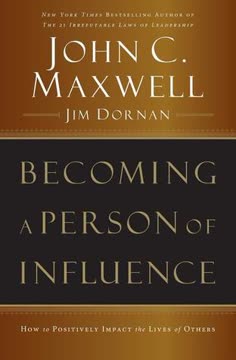

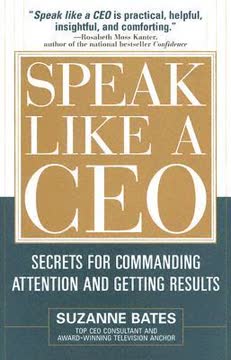
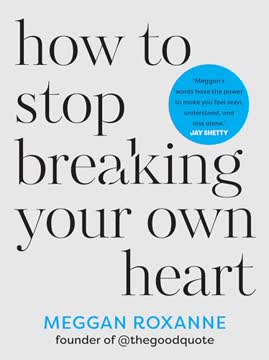
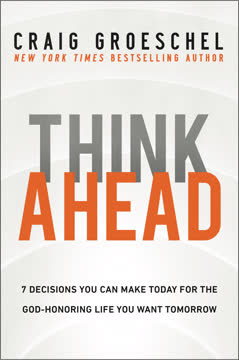

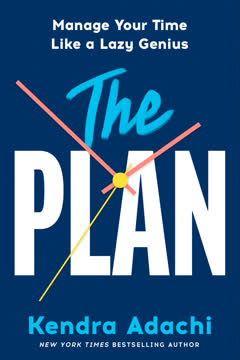
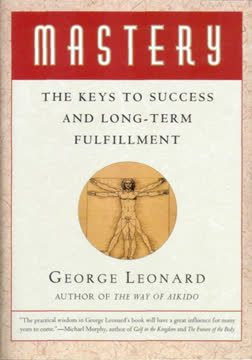
Download PDF
Download EPUB
.epub digital book format is ideal for reading ebooks on phones, tablets, and e-readers.
